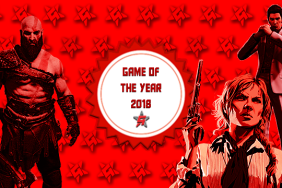When I think of Disneyland, I often think of two things: Pirates of the Caribbean and a song by the band Timbuk3. (Hint: in the blues-pop song, "Dis••land" is used as a sarcastic euphemism for the concept of Heaven.) Insomniac Games' sound designers and I agree on one thing about Disneyland, and it's not a song from the band that gave us "My Future's so Bright (I Gotta Wear Shades)".
At a talk at GDC, Insomniac's Audio Lead Dwight Okahara and the Primary Sound Designer on Resistance 3 Chris Olander talked about the influence of Disneyland, especially the Pirates of the Caribbean ride on their approach to the sound design in Resistance 3. First they imagined Disneyland itself as a game and each of its "Lands" as a level, with rides as subdivisions or events in the level. When they showed gameplay footage, they also showed exact places in the Pirates of the Caribbean ride they drew inspiration from.
They talked about how the Pirates ride primes you for the experience by having you first pass by a restaurant and swamp setting, which allows them to transition from the crowd sound outside, to a minor version of the restaurant noise combined with noises created for the ride, like crickets, swamp sounds, etc. This inspired them to ease the audience into the game with the homespun sounds of a woodstove, before moving into more thematic content.
A great deal of the talk focused on what Okahara and Olander referred to as "Practical Audio" or audio sources tied to objects in the game. The most obvious of these are items that the player is used to thinking of sound coming from, like radios.

This also refers to sounds from actions characters are performing. For reference they showed photographs of different characters from the Pirates ride, like a pirate with pigs that oink or a pirate band that performs the pirate song. These scenes often had speakers built into nearby objects, like barrels or stones in the wall. For Insomniac, this meant using virtual speakers that the designers called "3D emitters" to do the same thing.
Another way they copied sound design was how the ride uses its "practical sounds" only in the area that they reference. Otherwise, the sounds would mix too much, which Okahara referred to as "muddy sound". In the Pirates of the Caribbean ride, this was achieved by designing the acoustics of the ride to keep the sounds from travelling past their specific vignette or scene. For the designers, this was less a matter of acoustics and more a matter of controlling how when and where these sounds dropped off.
To illustrate this, Okahara and Olander kept coming back to what seemed to be their favorite part of the ride: a hillbilly guy sitting in a rocking chair outside his house while listening to banjo music play inside. They marked this as the first place where the ride's reality really begins and talked about its use of the principles they were discussing. They came back to him so many times in the presentation that they gave him the name "Swampy Joe". I will never be able to think of him any other way.
Last, they broke away from talking about Disneyland to discuss how focus testing changed the design of Resistance 3. They listed the most important things that fans wanted to hear, and number one was guns. So the player's guns are generally the loudest sound in the game. The second thing they heard from fans was that they always wanted to hear an enemy's death sound, even if the enemy was miles away. And third, similar to guns was melee.
It was a great talk about atmosphere and how games use sound to create it. it's definitely something I'll listen for more closely in the future. That, and the next time I think about Pirates of the Caribbean, I'll think of Swampy Joe.










